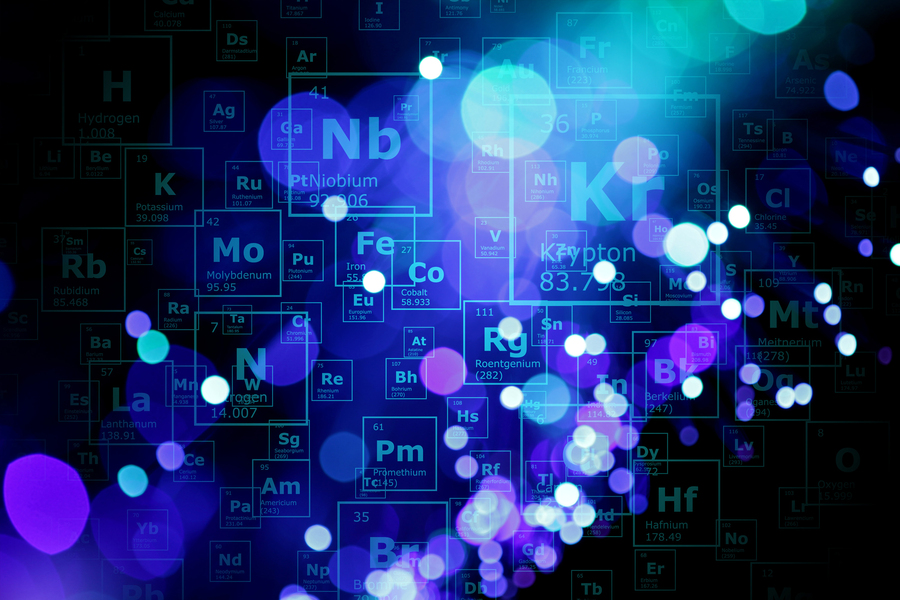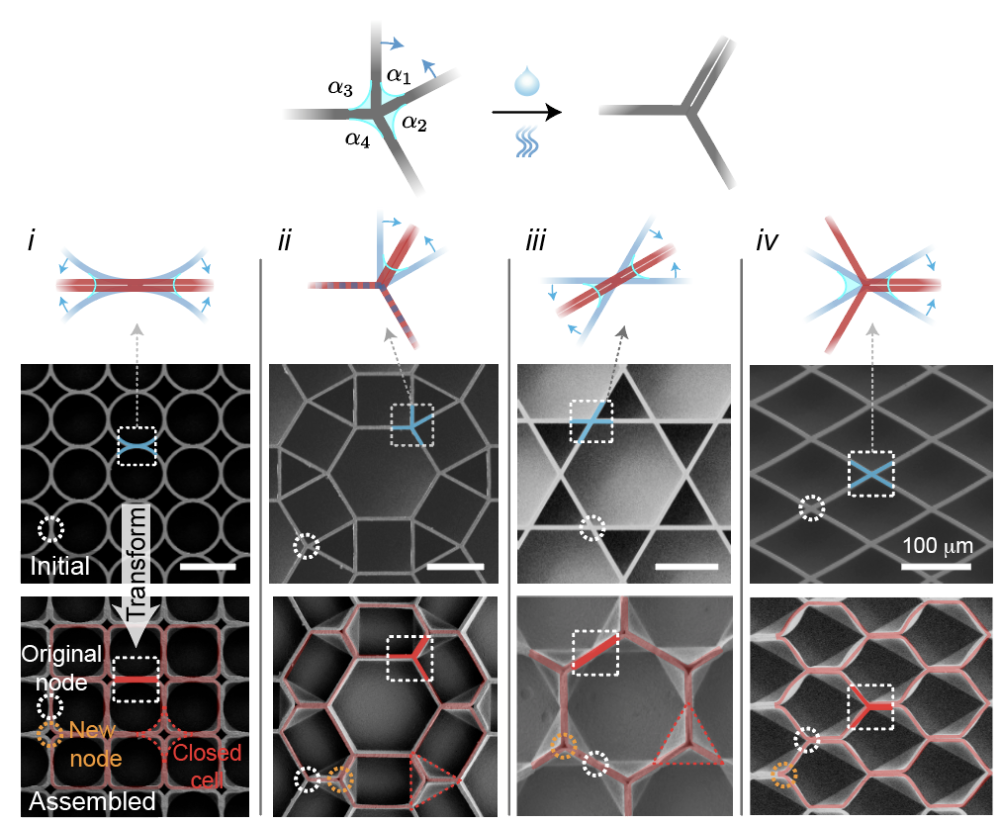创新背景
拓扑材料以数学的一个分支命名,该分支基于其不变特性来描述形状,无论物体被持续拉伸或挤压多少,其不变特性都不会改变。同样,拓扑材料的性质保持不变,尽管它们的条件发生了变化,如外部扰动或杂质。其表面表现出不同于其内部的电或功能特性,自2007年其实验实现以来一直是研究的热点领域,这一发现引发了进一步的研究,并促成了2016年的诺贝尔物理学奖。这些材料被认为在许多领域都有巨大的潜力,有一天可能被用于超高效的电子或光学设备,或量子计算机的关键部件。
但是有成千上万种化合物理论上可能具有拓扑特性,而合成和测试哪怕是一种这样的材料来确定其拓扑特性都可能需要数月的实验和分析。
创新过程
研究人员提出了一种新方法,可以快速筛选候选材料,并以超过90%的准确率确定它们是否具有拓扑结构。使用这种新方法,研究人员已经制作了一个候选材料列表。其中一些已经被知道具有拓扑性质,但其余的是通过这种方法新预测的。
拓扑材料有几种,包括半导体、导体和半金属等。最初,人们认为这种材料屈指可数,但最近的理论和计算预测,事实上成千上万种不同的化合物可能至少具有某种拓扑特征。困难的部分是在实验上弄清楚哪些化合物可能是拓扑的。

这类材料的应用范围很广,包括可以执行与硅基设备类似的计算和数据存储功能,但能量损失要小得多的设备,或者从废热中高效收集电能的设备,例如在火电厂或电子设备中。拓扑材料也可以具有超导特性,这可能被用于构建拓扑量子计算机的量子比特。
传统的方法依赖于测量材料的光电发射或隧穿电子,而新技术依赖于吸收,特别是材料吸收x射线的方式。与传统测试所需的昂贵设备不同,x射线吸收光谱仪很容易获得,可以在室温和常压下工作,不需要真空。这种测量在生物学、化学、电池研究和许多其他应用中被广泛应用,但它们以前从未被应用于识别拓扑量子材料。

x射线吸收光谱学提供了特定材料样品的特征光谱数据。下一个挑战是解释这些数据以及它与拓扑属性的关系。为此,研究小组求助于机器学习模型,输入已知拓扑和非拓扑材料的x射线吸收光谱数据集合,并训练模型找到两者之间的关联模式。它确实发现了这种相关性。当对1500多种已知材料进行测试时,这种方法的准确率超过90%,且预测只需要几秒钟。
该团队使用该模型构建了一个元素周期表,显示了该模型对由每种元素组成的化合物的整体准确性。它可以作为一种工具,帮助研究人员锁定可能为特定应用提供正确特征的化合物族。研究人员还对他们使用x射线方法研究的化合物进行了初步研究,并在没有预先了解它们的拓扑状态的情况下,编制了一份100种有希望的候选材料的清单——其中一些已经被知道是拓扑的。
创新关键点
创新应用x射线吸收光谱作为测量样品拓扑特性的关键,且x射线吸收光谱仪很容易获得,可以在室温和常压下工作,不需要真空。这种测量在生物学、化学、电池研究和许多其他应用中被广泛应用,但它们以前从未被应用于识别拓扑量子材料。
创新价值
传统的方法依赖于测量材料的光电发射或隧穿电子,而新技术依赖于吸收,特别是材料吸收x射线的方式,与传统测试所需的昂贵设备不同,x射线吸收光谱仪很容易获得,大大降低了成本。
Innovative Combination of Machine Learning and X-ray Spectroscopy to screen "topological materials"
Researchers have proposed a new method that can quickly screen candidate materials and determine whether they have a topological structure with more than 90 percent accuracy. Using the new method, the researchers have produced a list of candidate materials. Some of these were already known to have topological properties, but the rest were newly predicted by this method.
There are several types of topological materials, including semiconductors, conductors and semi-metals. Initially, it was thought that there were only a handful of such materials, but recent theory and calculations predict that in fact thousands of different compounds may have at least some topological feature. The hard part is figuring out experimentally which compounds might be topological.
Such materials have a wide range of applications, including devices that can perform similar computing and data storage functions as silicon-based devices but with much less energy loss, or devices that efficiently harvest electricity from waste heat, such as in thermal power plants or electronics. Topological materials can also have superconducting properties, which could potentially be used to build qubits for topological quantum computers.
Whereas traditional methods rely on measuring photoemission or tunneling electrons from materials, the new technique relies on absorption, specifically the way the material absorbs X-rays. Unlike the expensive equipment required for traditional tests, X-ray absorption spectrometers are readily available and can operate at room temperature and pressure without the need for a vacuum. Such measurements are widely used in biology, chemistry, battery research, and many other applications, but they have never before been applied to identify topological quantum materials.
X-ray absorption spectroscopy provides characteristic spectral data of a specific material sample. The next challenge is to interpret this data and how it relates to topological properties. To do so, the team turned to machine learning models that fed collections of X-ray absorption spectrum data from known topological and non-topological materials and trained the models to find patterns of association between the two. And it did find that correlation. When tested on more than 1,500 known materials, the method was more than 90 percent accurate and took only a few seconds to predict.
The team used the model to build a periodic table of elements, showing the model's overall accuracy for compounds made up of each element. It can be used as a tool to help researchers target families of compounds that are likely to provide the right characteristics for a particular application. The researchers also conducted preliminary studies of the compounds they studied using X-ray methods, and compiled a list of 100 promising candidates - some of which were already known to be topological - without prior knowledge of their topological states.
智能推荐
将微小金刚石晶体创新应用于引力波探测器
2022-08-04伦敦大学学院领导的一项新研究表明,微小的钻石晶体可以用作一种非常灵敏的小型引力波探测器,能够测量引力波。
涉及学科涉及领域研究方向AI+粒子物理学 | 使用机器学习方法创新开发“粒子流算法”
2022-11-22研究证明了人工智能在粒子物理研究领域的可用性。
涉及学科涉及领域研究方向通过孤子微梳探索光学频率梳的量子特性
2022-07-27利用孤子微型频率梳研究频率梳的量子特性,探索光学频率梳量子特性和量子纠缠的存在。
涉及学科涉及领域研究方向量子技术+探测学 | 微波量子照明有助于提高探测技术灵敏度
2022-06-29采用量子力学进行量子照明技术研究,利用光子联系进行灵敏探测。
涉及学科涉及领域研究方向